Back to the beaches
Kosciuszko National Park had entertained us for a few days, including the highlight of climbing to the top of Mt Kosciuszko, Australia’s highest peak, and we could have stayed longer but our weather apps told us the weather on the coast was finally going to be what one would expect in an Australian summer – hot and sunny. So in our ever-flexible travel mode we decided to head for the coast and resume our beach holiday.
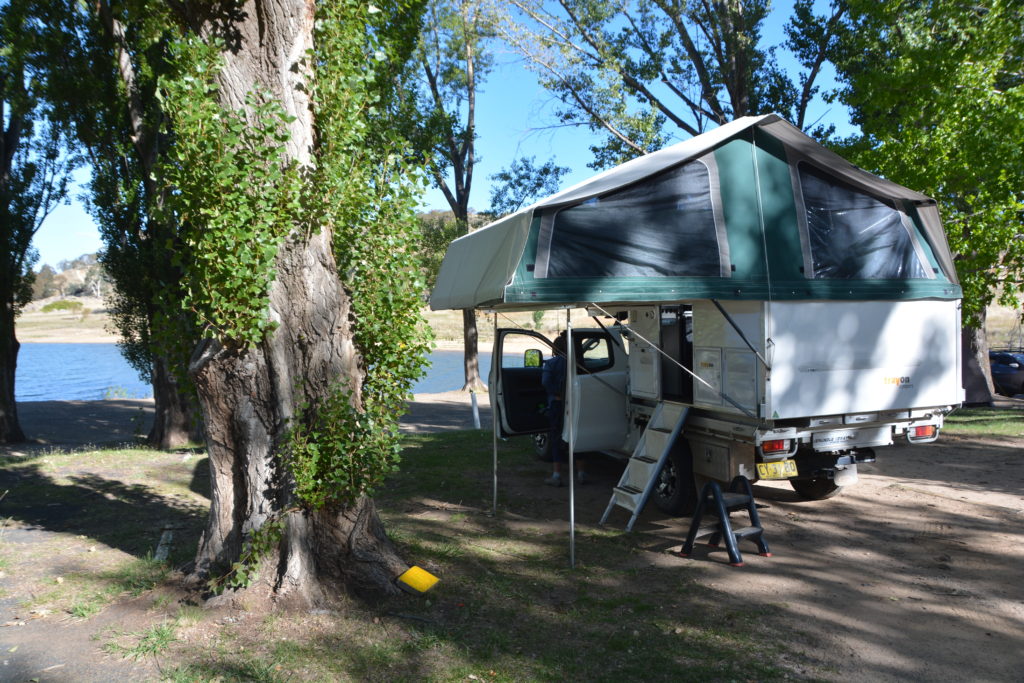
The drive from Jindabyne down to the coast was a beauty, first along the Snowy River, which recommenced its journey after having been caught in the Snowy Hydro system and Lake Jindabyne, to the historic little town of Dalgety before heading further eastward through rolling golden hills perfectly suited for grazing cattle and sheep.
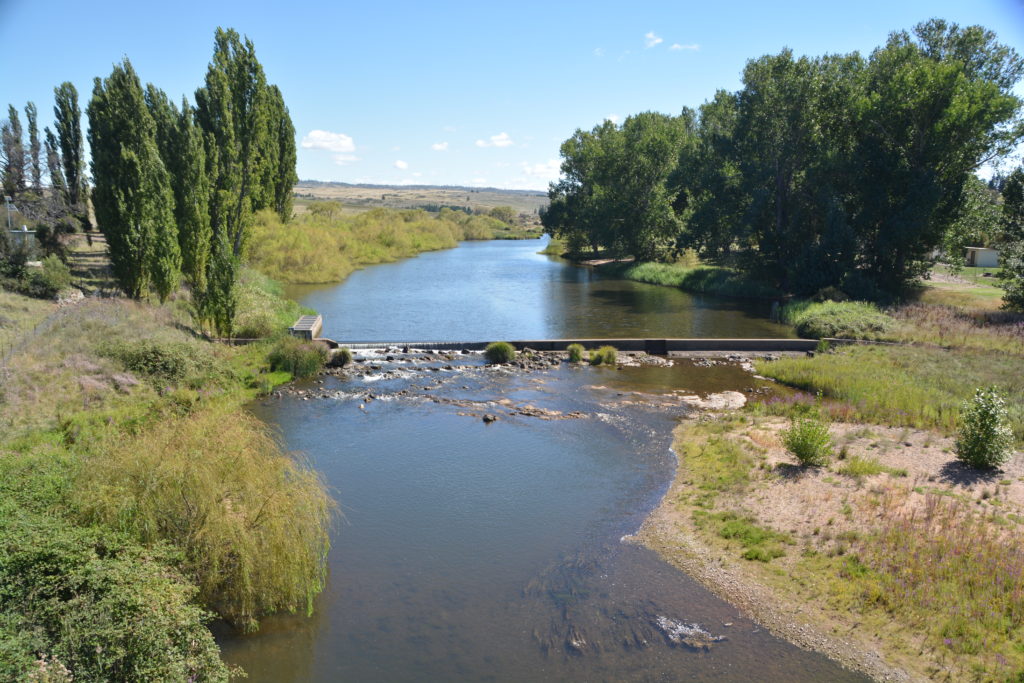
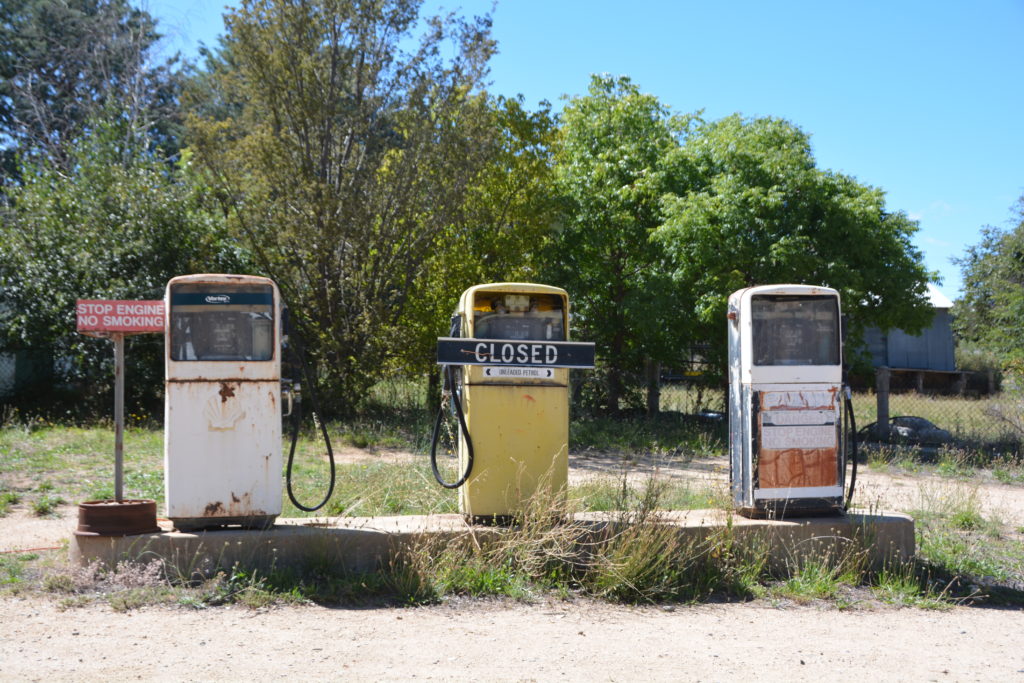
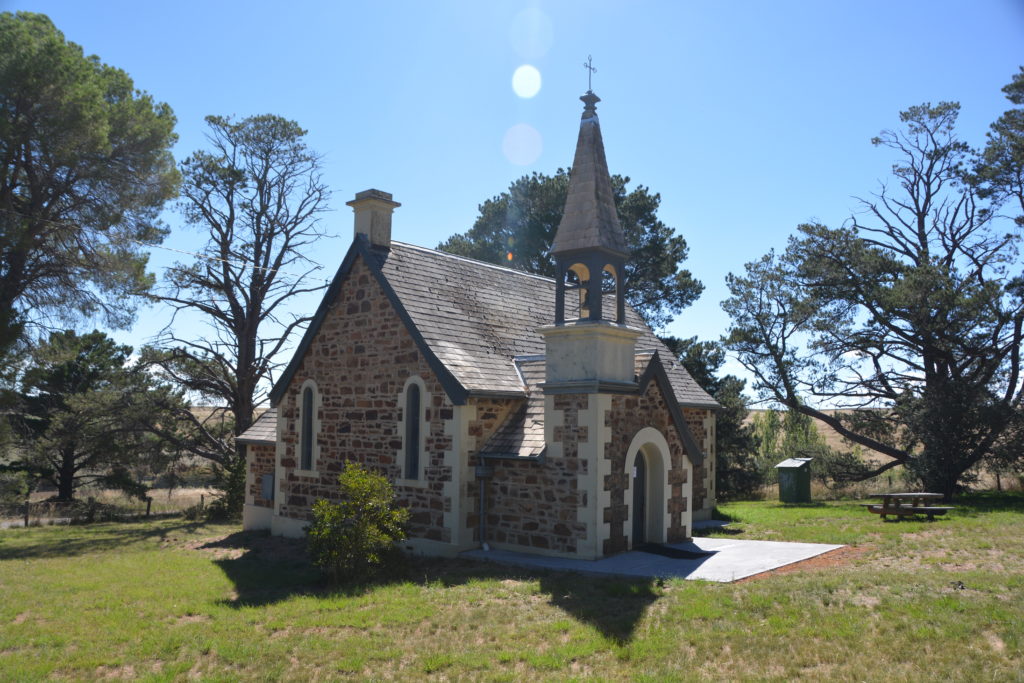
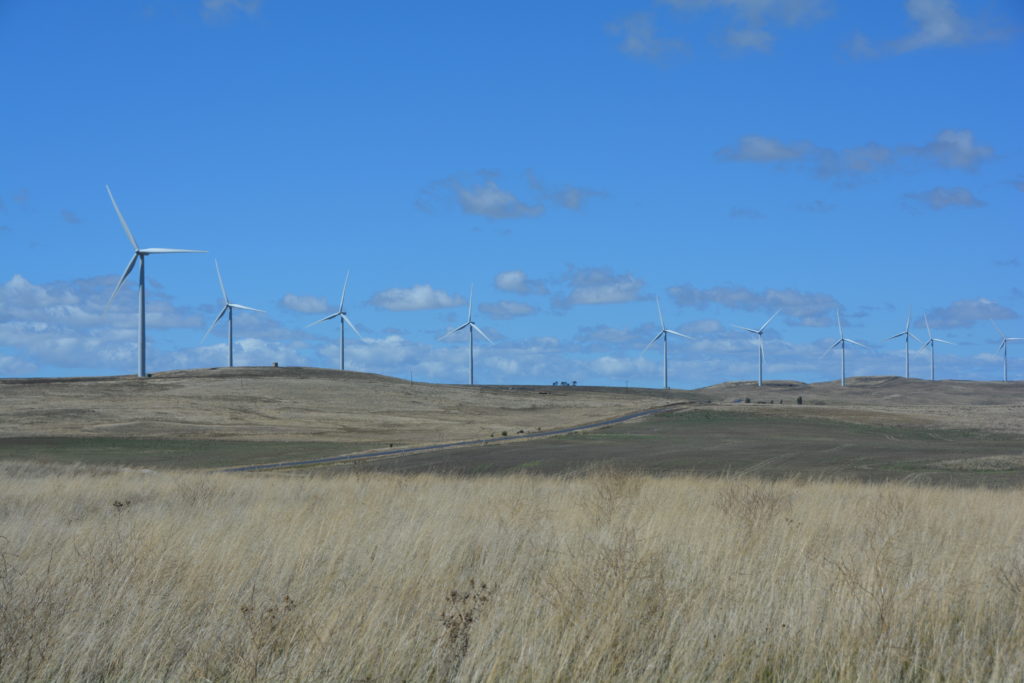
We made our way down to the rural community of Bombala before weaving our way through burned-out state forests and national parks and hitting the coast at Pambula. We had chosen a caravan park right on Pambula Beach for the weekend and set up camp with just a small sand dune separating us from the crashing Pacific.
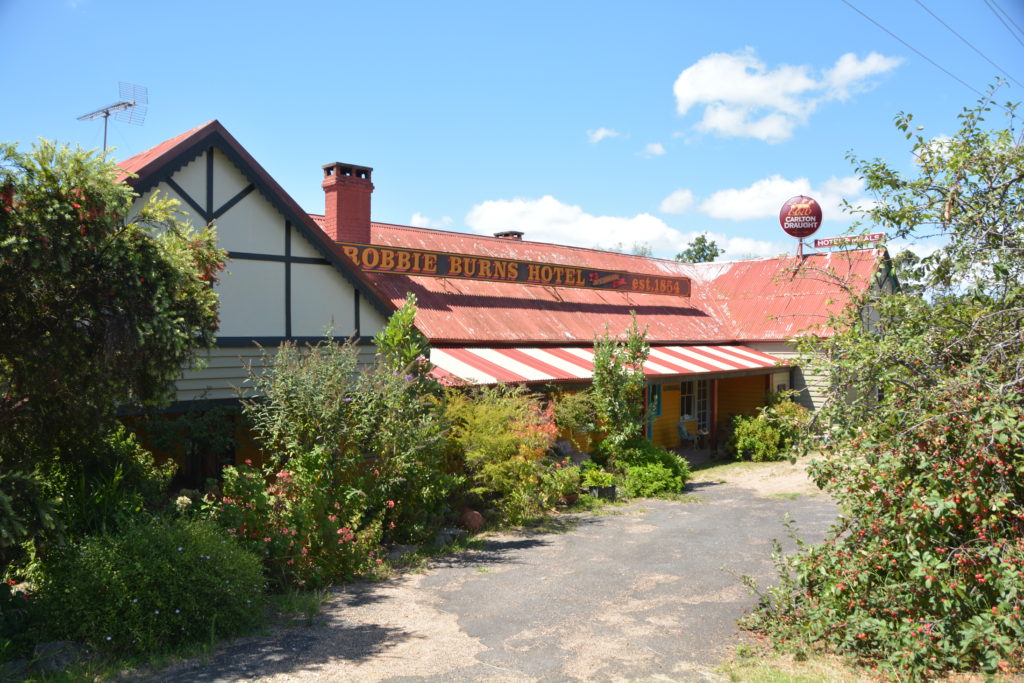
For those seeking sun and sand Pambula has it all. It is pitched at the southern end of Merimbula Bay with an endless beach stretching many kilometres to the north and the wide Pambula River flowing into the ocean south of the point. Pambula is a small and sleepy community which must ebb and flow with the seasons and the crowd of holiday campers who fill the huge campground there. We instantly loved it.
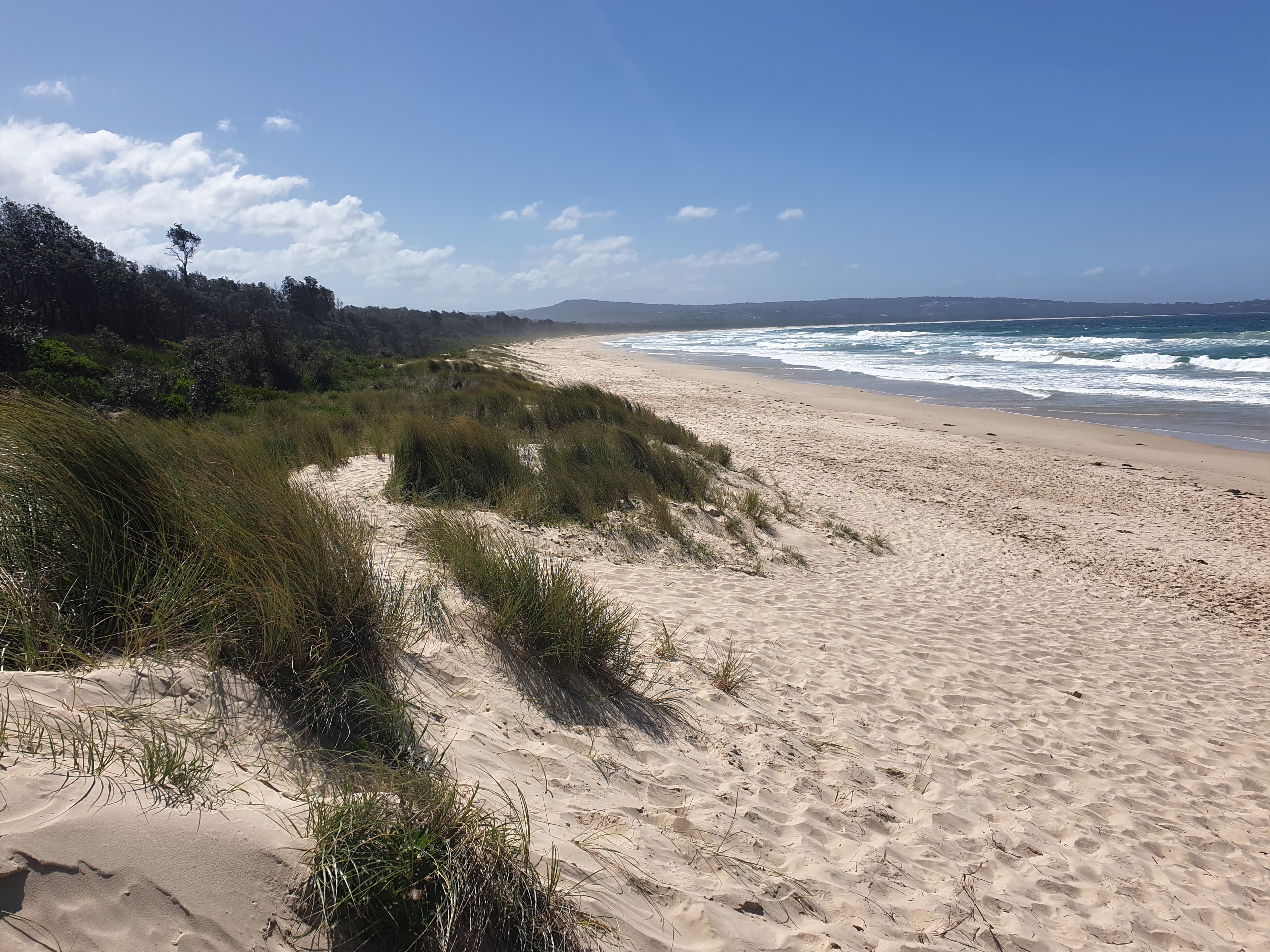
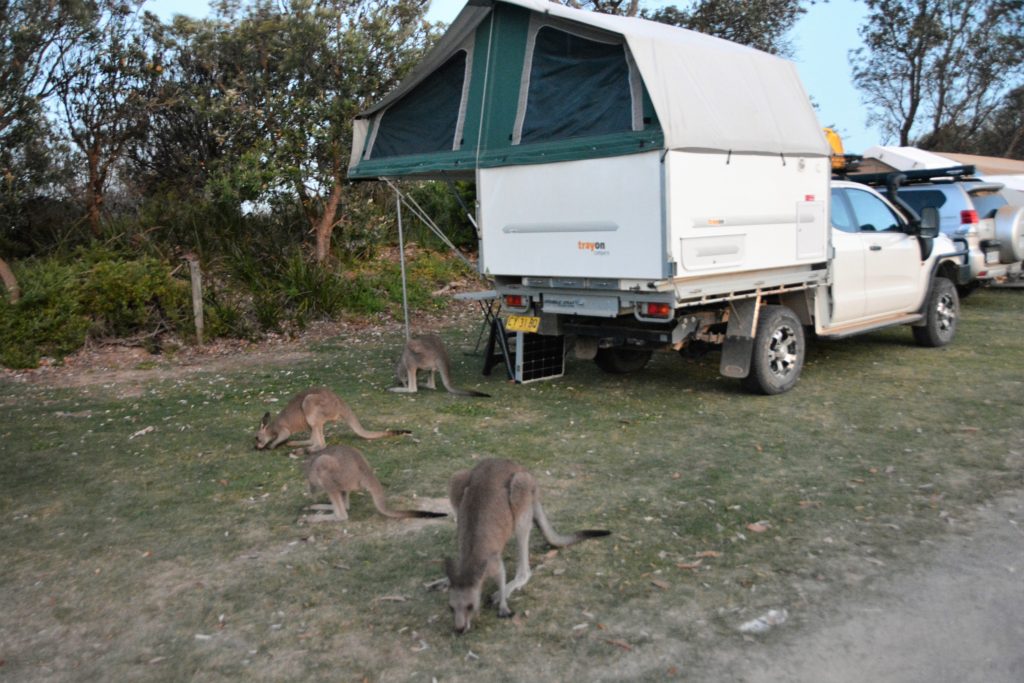
In Pambula’s campsite we were visited by kangaroos… 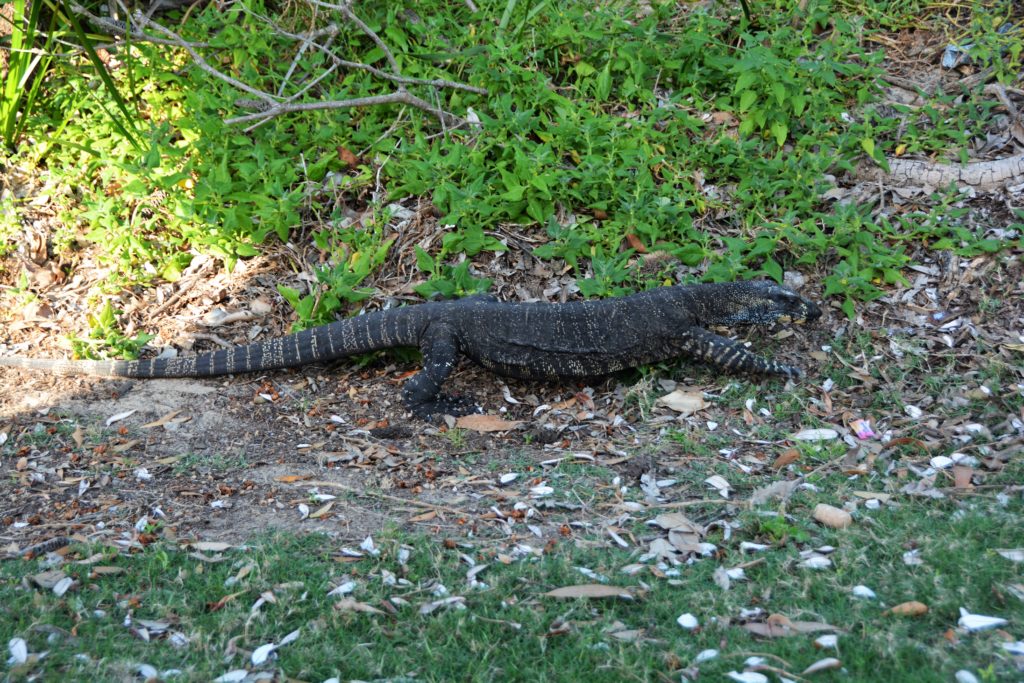
…and a fearless goanna
We spent the next day exactly as we had hoped to spend many on this southern journey, morning on the beach with multiple swims, chat to people in the camp, watch people of all ages and families enjoying the long beautiful beach and all the facilities of this extensive campground. We marveled at all the different ways to get out and about – people in tiny tents, larger family tents, roof top tents, rigs like ours and then the big campers – some just massive – eventually leading to the huge RV-type setups which are like a home on wheels. But as we have often said, it doesn’t matter how you do it as long as you’re doing it.
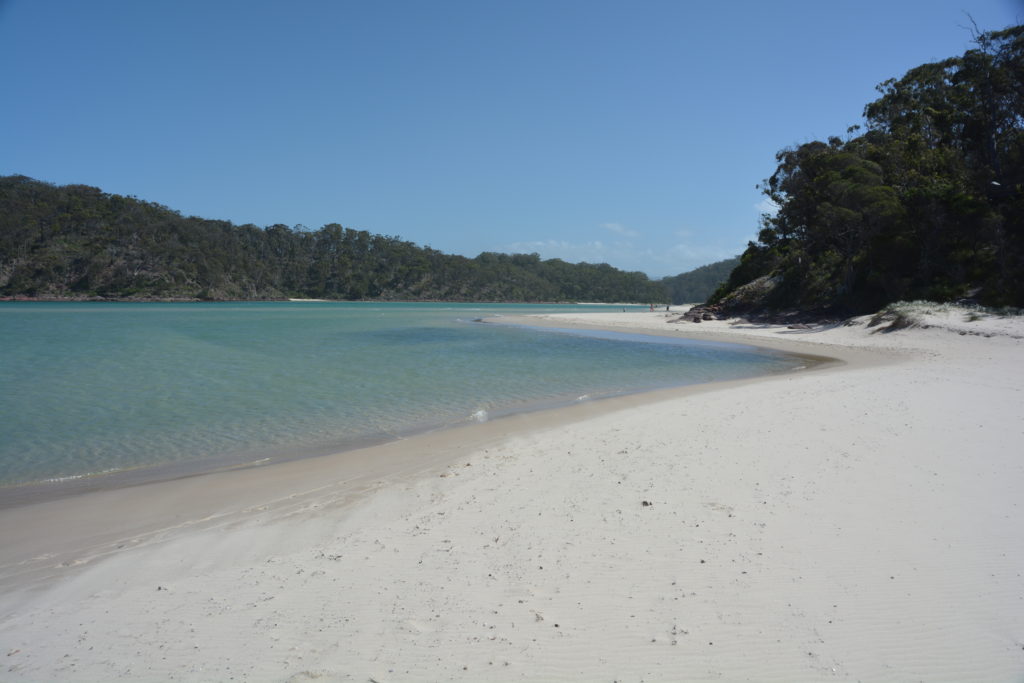
We lazed around camp in the afternoon, doing washing, small chores, reading, a late swim with the sun low on the horizon behind us before cocktails on the beach. The sun shined brightly all day, nary a cloud to be seen. All in all it was a perfect day, one we hope to repeat later in this trip.
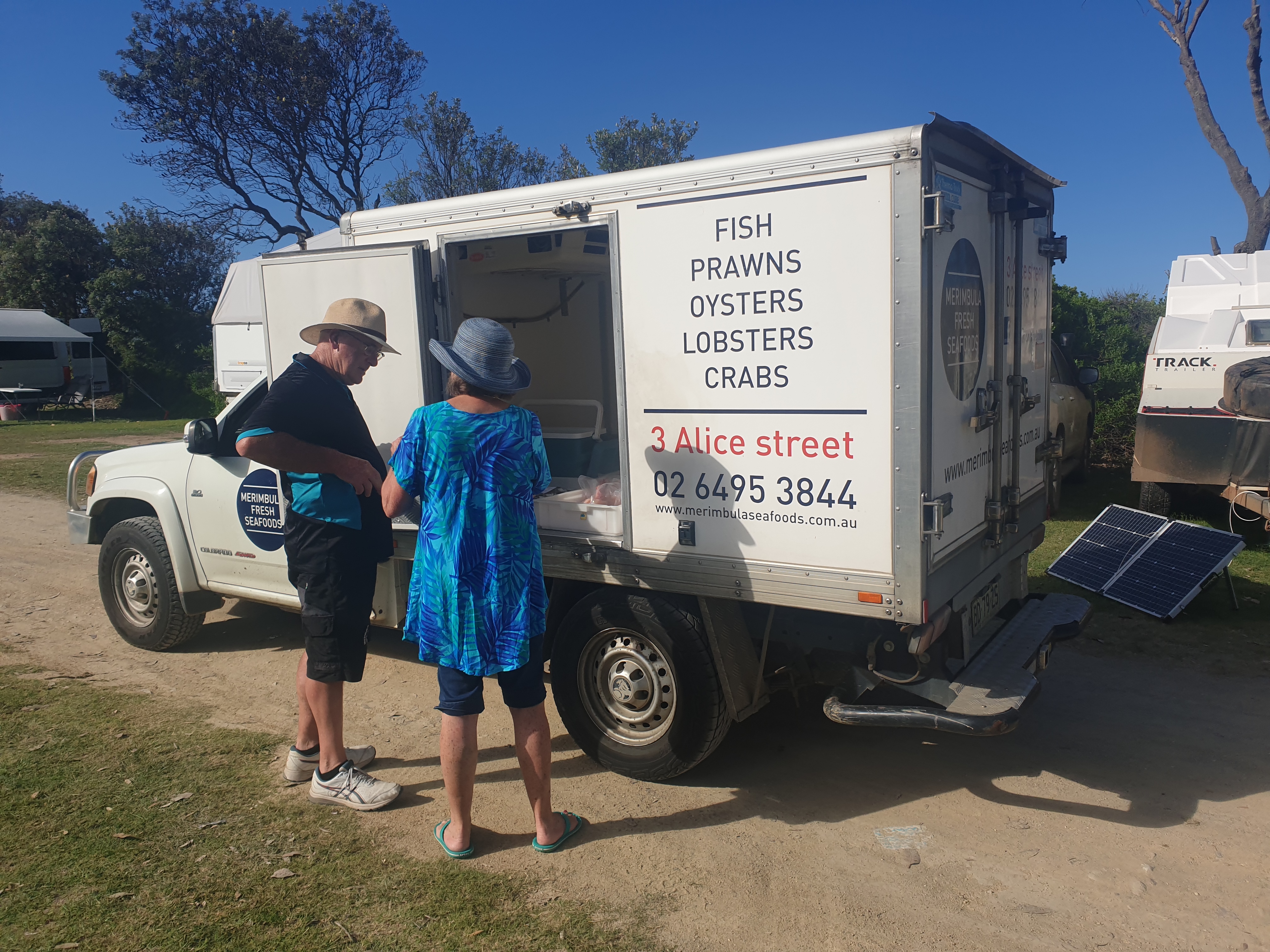
Ben Boyd National Park dominates the coastline in the far southeast corner of the state. Preserving beautiful beaches, wild heath and tall forests north and south of the town of Eden, Ben Boyd is a natural paradise. We made our way south of Pambula to explore this outdoor playground, stopping first at the Pinnacles, a place where natural shoreline erosion has exposed colourful rocks stained red by iron oxide in the rocks and a whitewash where water levels from eons ago washed the rock.
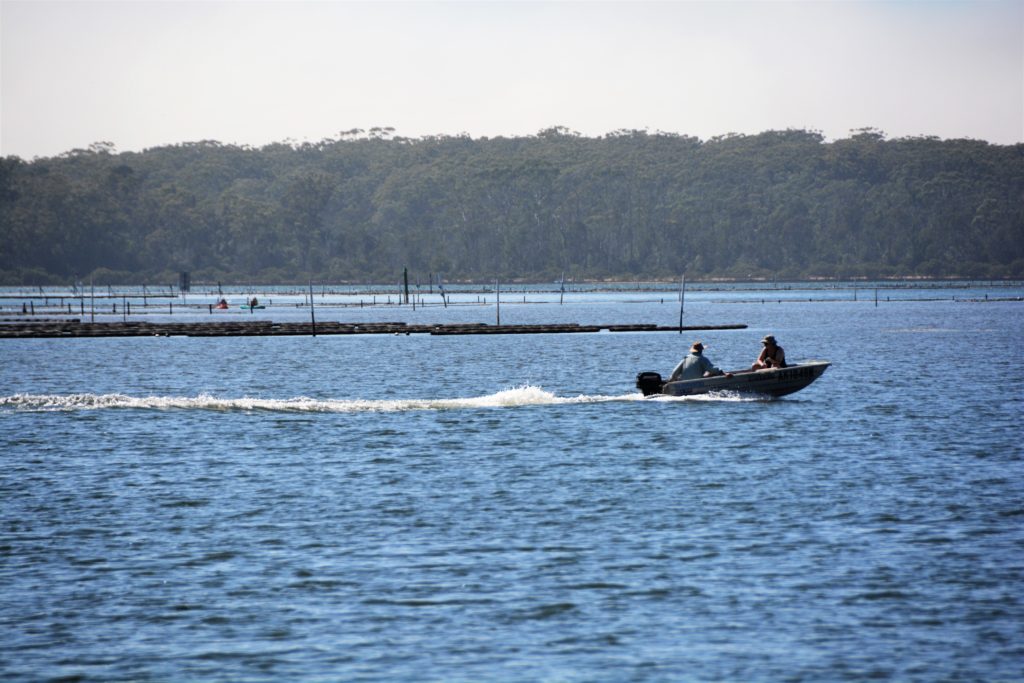
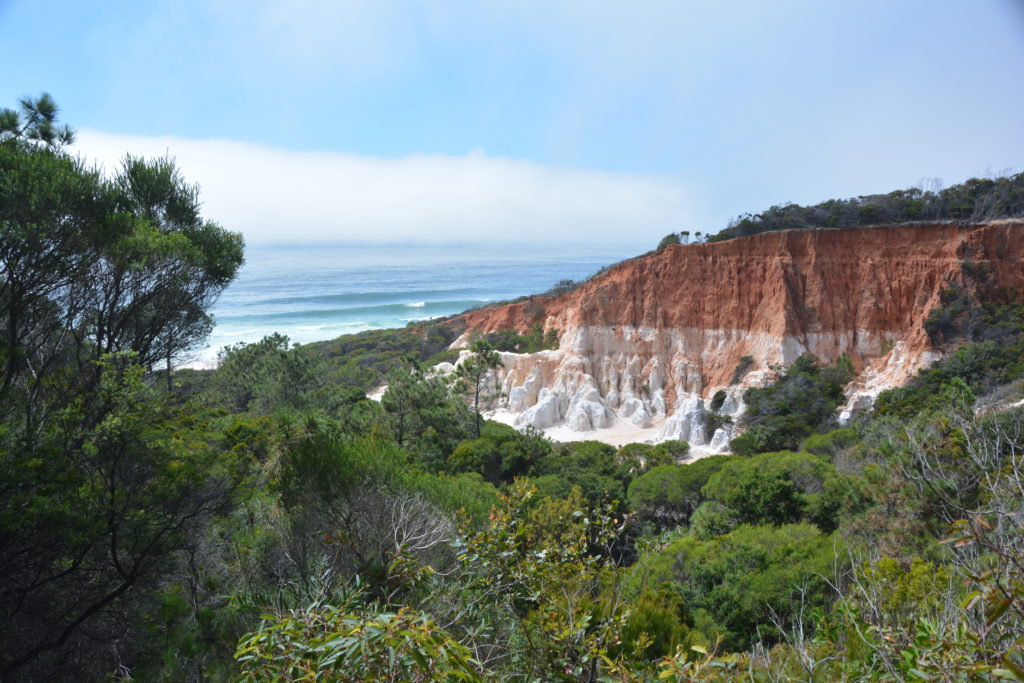
We stopped at Eden, famous for whale hunting in the old days and now the more sedate whale watching in season, but headed back into the park and made our way across rough dirt tracks to Green Cape Lighthouse. Along the way we came to a spectacular lookout high above the north rim of Disaster Bay. This crescent shaped bay was lined with a stunning beach on each side of the Wonboyn River’s mouth, surrounded by national park and the extensive Nadgee Nature Reserve. What a spot!
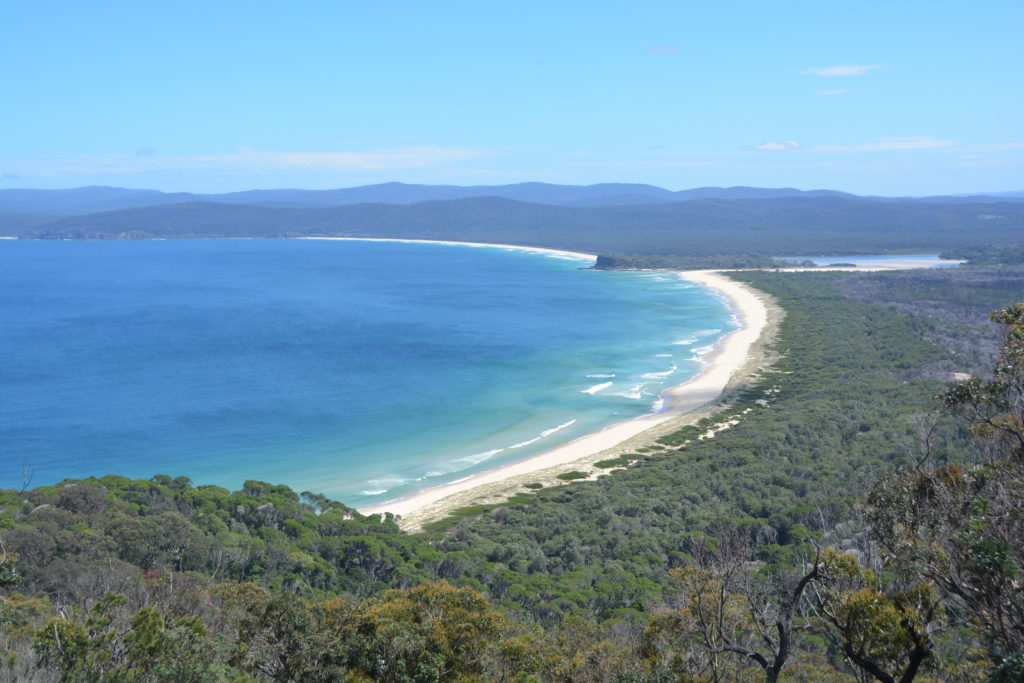
The Green Cape lighthouse was built in the 1880’s to protect ships from dangerous rocks and ensure all captains kept a wide berth. These relatively small ships sailing across vast oceans were Australia’s only connection to the outside world and it was imperative they travel the coastline safely. It was a worthy endevour but must have been a lonely and difficult life for those hearty souls manning the lighthouse day and night. Today it commands a dominant position with stunning views north and south along the coastline.
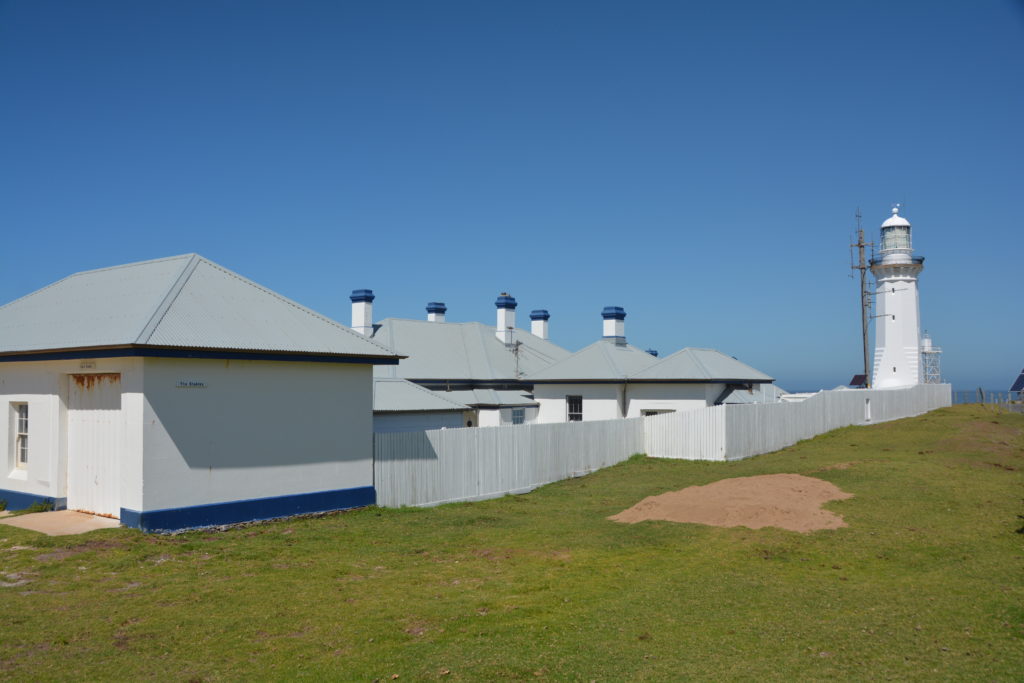
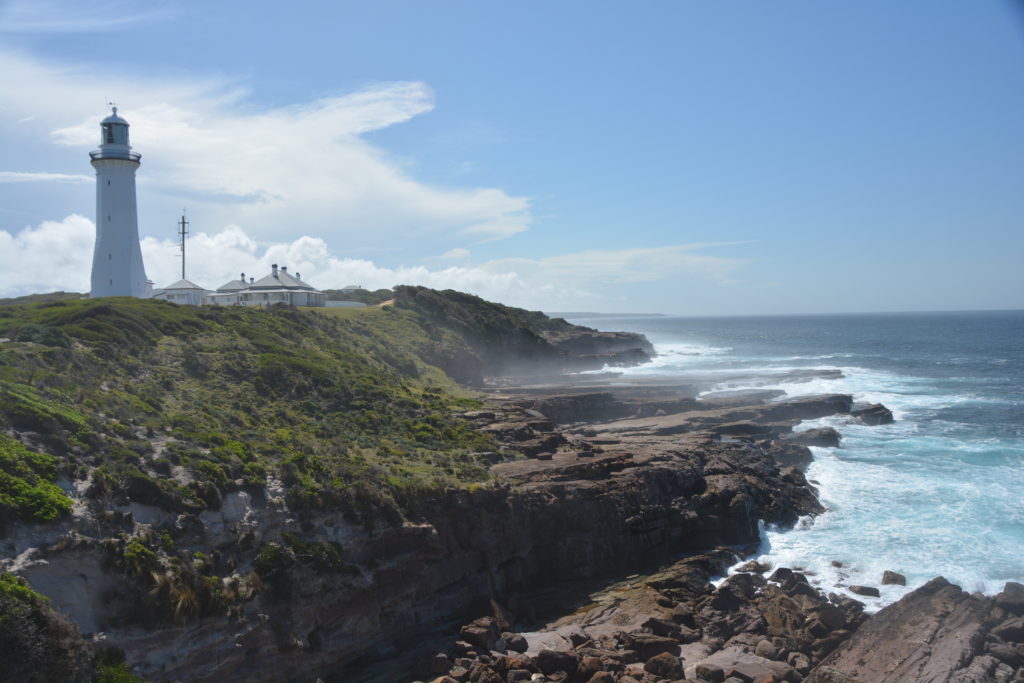
We camped the night at Bittangabee Bay in the heart of the park, as remote a spot as you can have in these parts. We enjoyed a quick swim in the little secluded beach at the end of the bay and enjoyed a fabulous night around our fire. There is something about the heat on your face from a camp fire that is very calming and comforting. The fact we were camped in the car park just opposite our fire pit was a necessary evil to be able to stay in such a place.
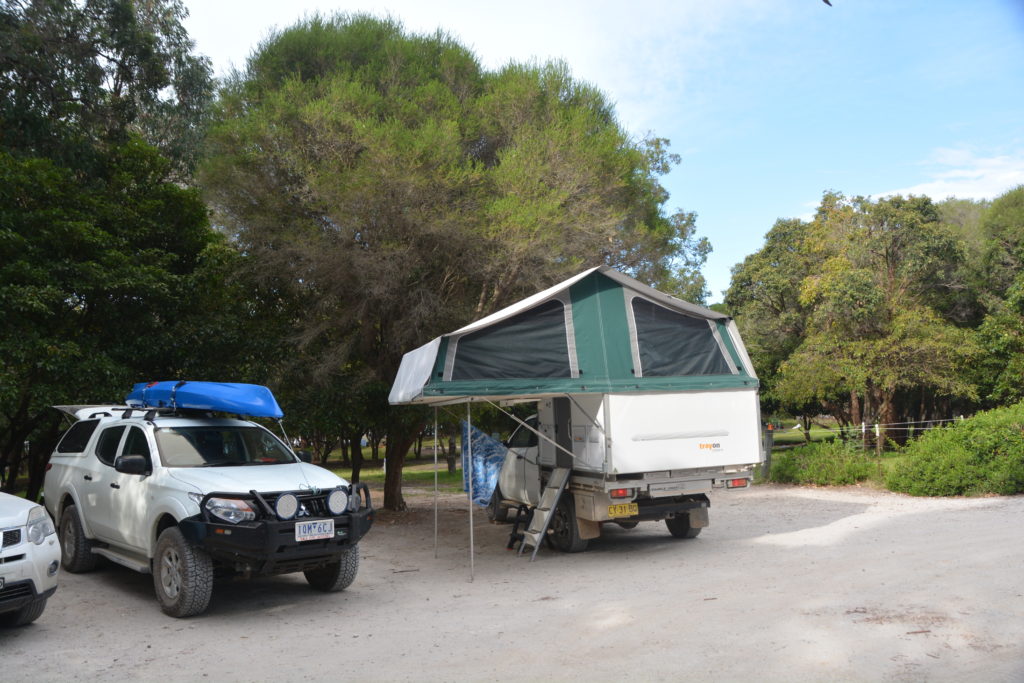
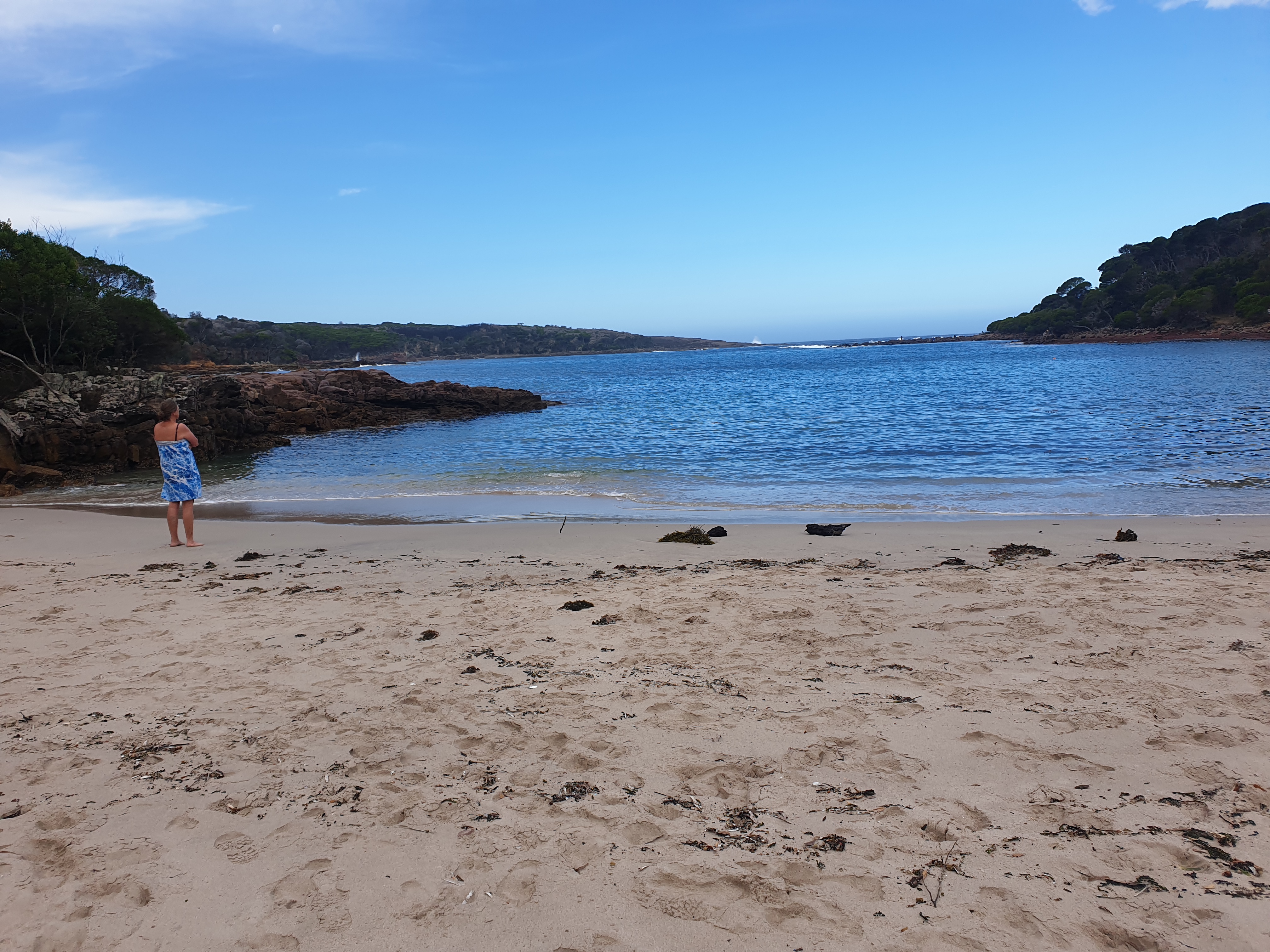
The other notable feature of Ben Boyd National Park (besides the fact it was dubiously named after a part-time slaver) is that it was severely burned in last year’s fires, like most of this corner of NSW. We passed through more long stretches of burned out forests, some trees winning their battle to regrow, others not.
A few shots of the beach and fascinating rocks at Saltwater Creek…





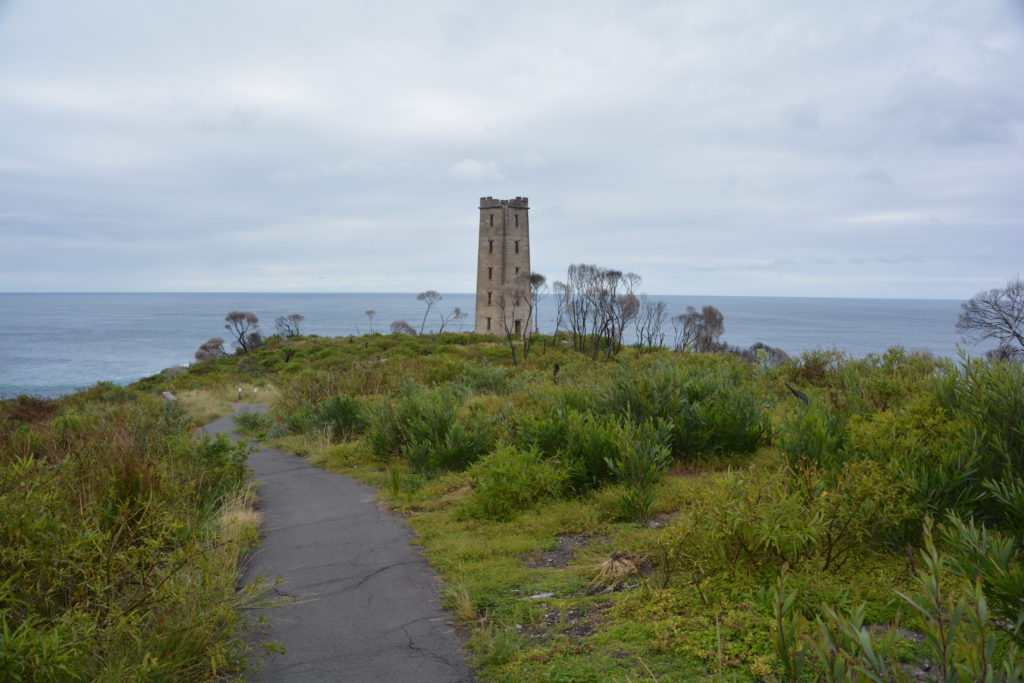
We drove down to Saltwater Creek, another beaut camping and beach spot before checking out Boyd Tower and the historic Davidson Whaling Station. This coastline was famous for shore-based whale hunting which began in the 1820’s and lasted for over 100 years. Long boats rowed by some brave men, often from local indigenous communities, would track down the whales and manually harpoon them, then somehow drag the stricken whales back into shore where they were boiled for their oil, never for their meat. Now that’s a sketchy way to make a living. But most amazingly, killer whales (orcas) would often help the whalers by driving the other whales into shore.
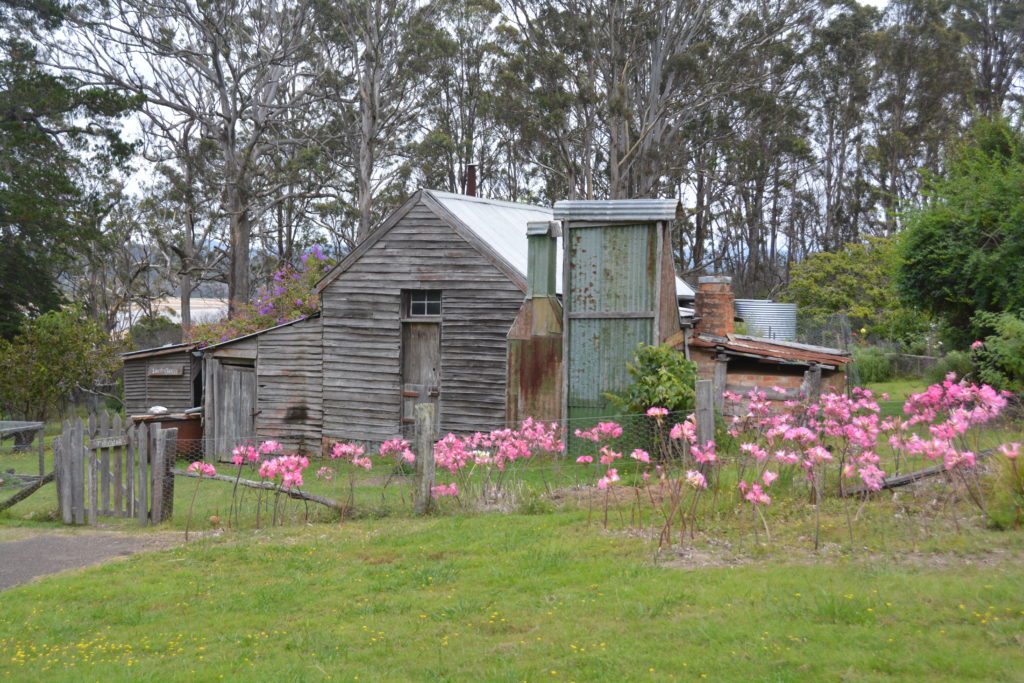
Where Ben Boyd National Park ends the Nadgee Nature Reserve takes over, protecting vast tracts of untouched land all the way to the Victorian border. All burned in the fires but going through the natural process of regrowth, Nadgee is the last spot on the state’s map. We headed into a small community of Wonboyn and followed a rough dirt track that popped out at the long untouched beach of Disaster Bay that we had seen the previous day from that high lookout. Wilderness at its best – very cool.
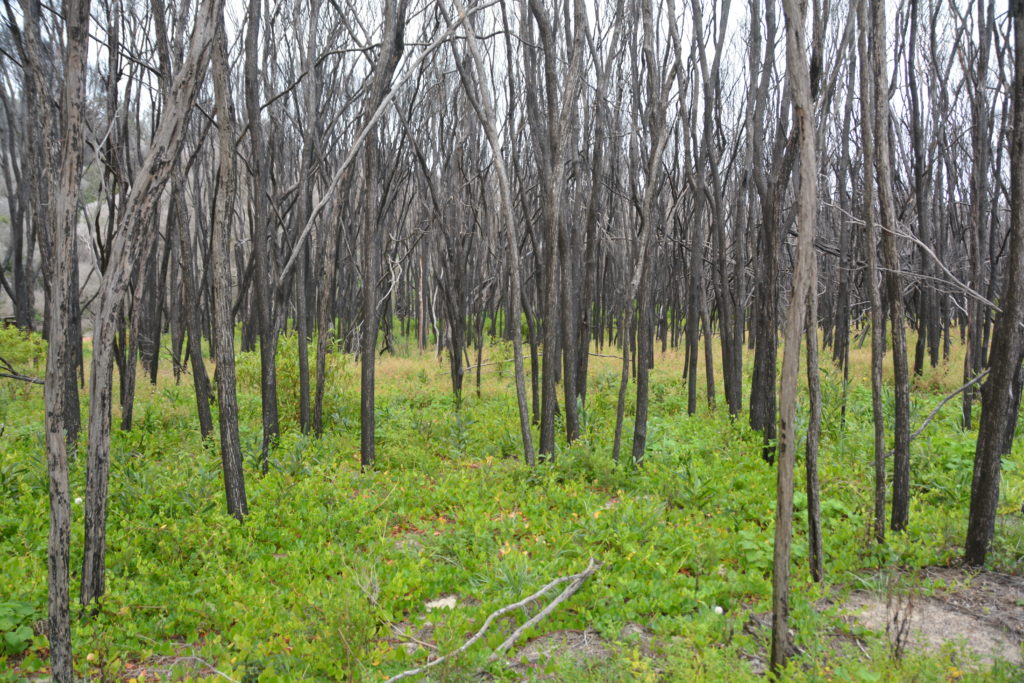
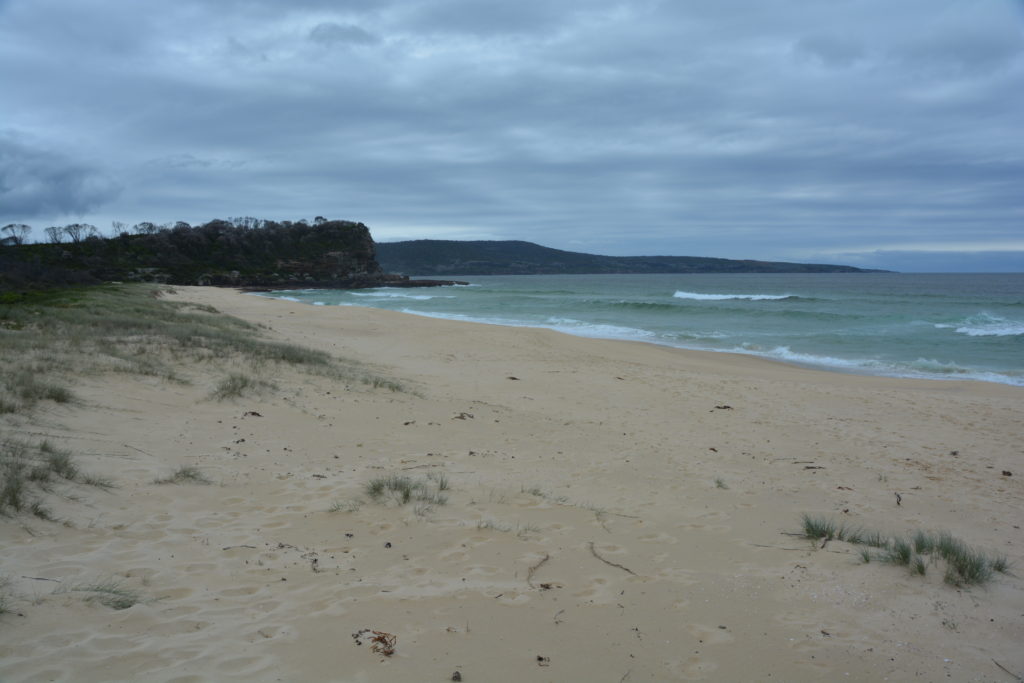
We followed the track deep into the nature reserve, ending where there was supposed to be a ranger station. Sadly, it appears the station was completely gutted by the fire, and subsequently bulldozed and cleaned up, leaving an eerie empty paddock. We found a clearing where these tall burned out trees couldn’t fall on us overnight and set up camp. No one near us for a long long ways, only the birds singing and the breeze in the trees to keep us company. Bliss.
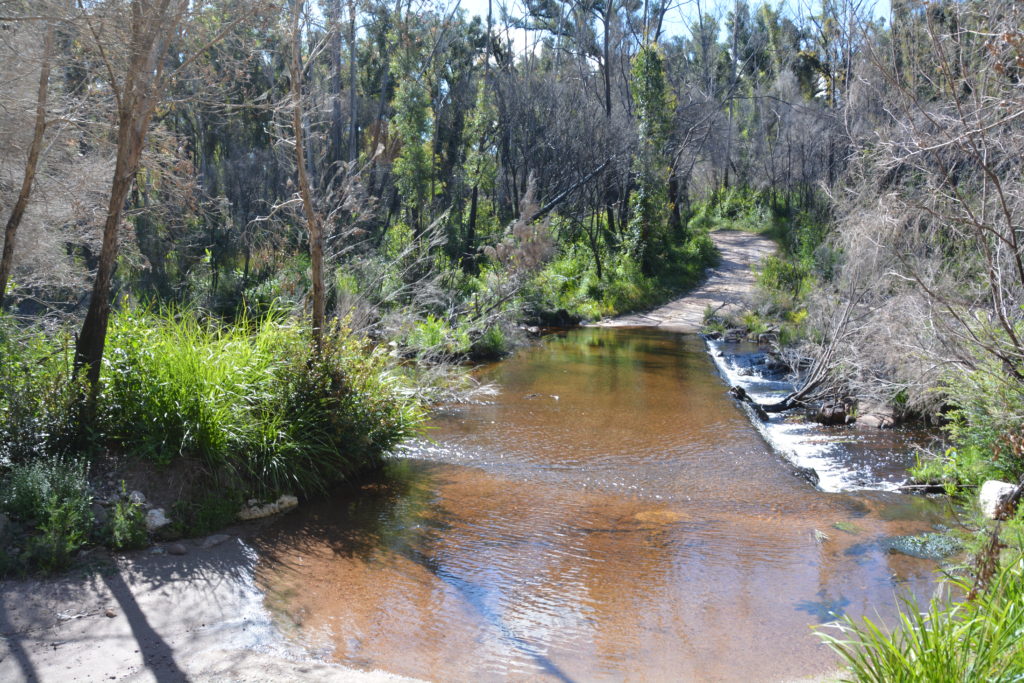
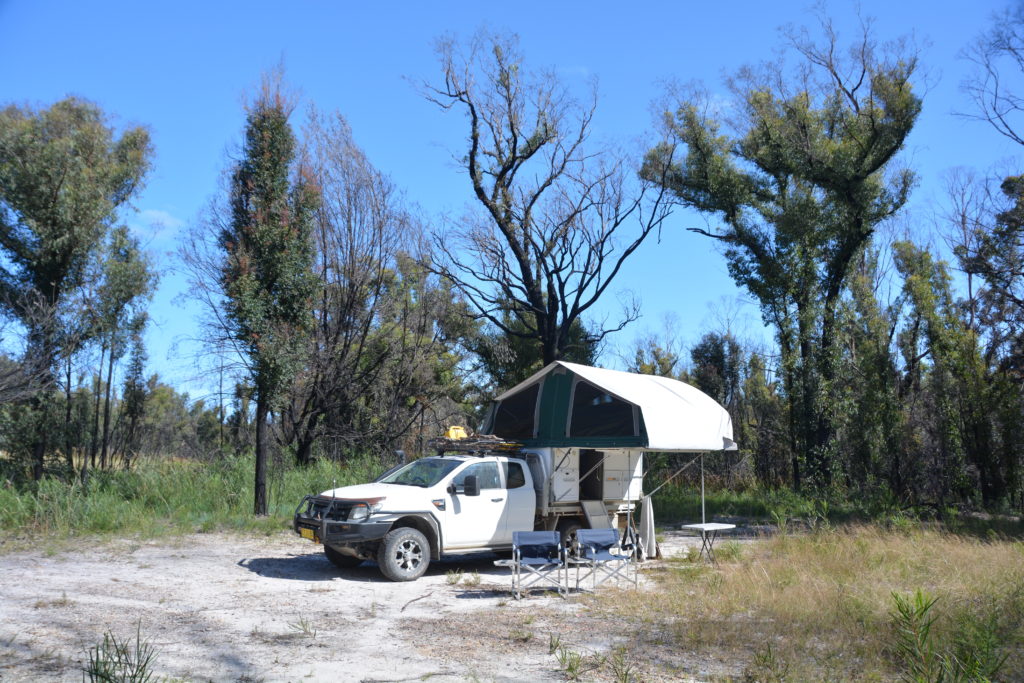
Ben Boyd National Park and Nadgee Nature Reserve had rewarded our curiosity, and then some, but the ranger station marked the turnaround point for our journey since we couldn’t go any further south along the coast. We pointed the ever-reliable Wanda northward and detoured into Mt. Imlay National Park whose major feature was – you guessed it – Mt. Imlay. The dirt track through heartbreaking burned out forests finished at the trailhead for the arduous hike to the 886 metre top of the mountain. Not today for us and we headed back down.
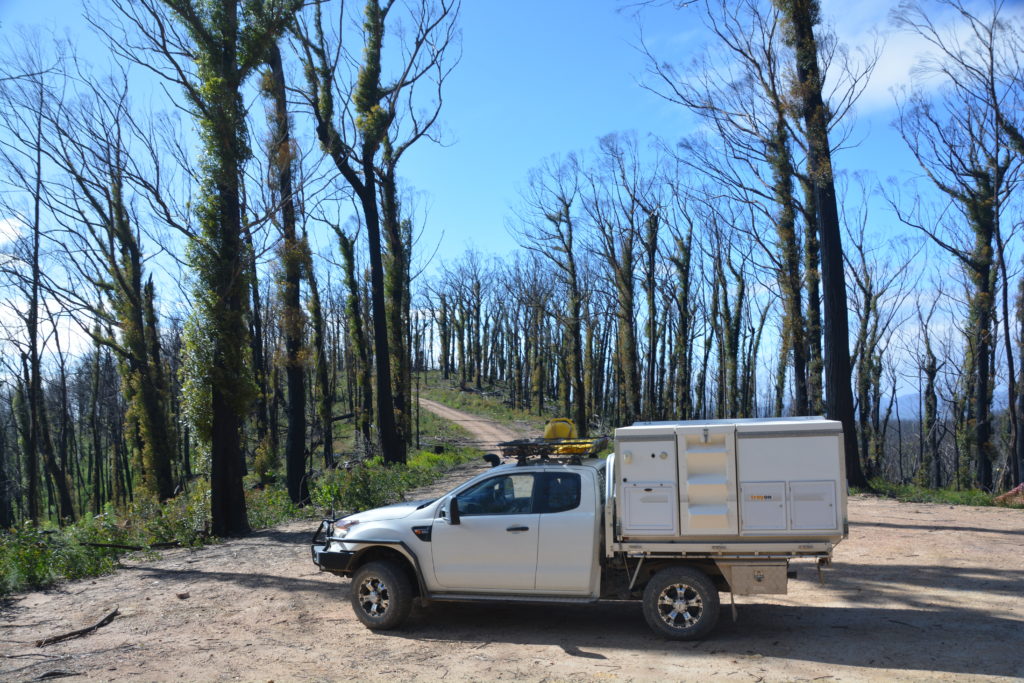
And then, our first disaster…or more accurately, mini-disaster. The water pump did not get turned off when we packed up Wanda in the morning and somehow the tap was turned to the On position which meant the 80 litres of water we had just filled up with the other day was now running out of our tank, into the sink, filled the small grey water tank, then overflowed into the camper cabin, running into the cupboards, pantry, storage lockers. When we stopped for photos on the Mt. Imlay road and saw the water dripping out we knew we had a problem.
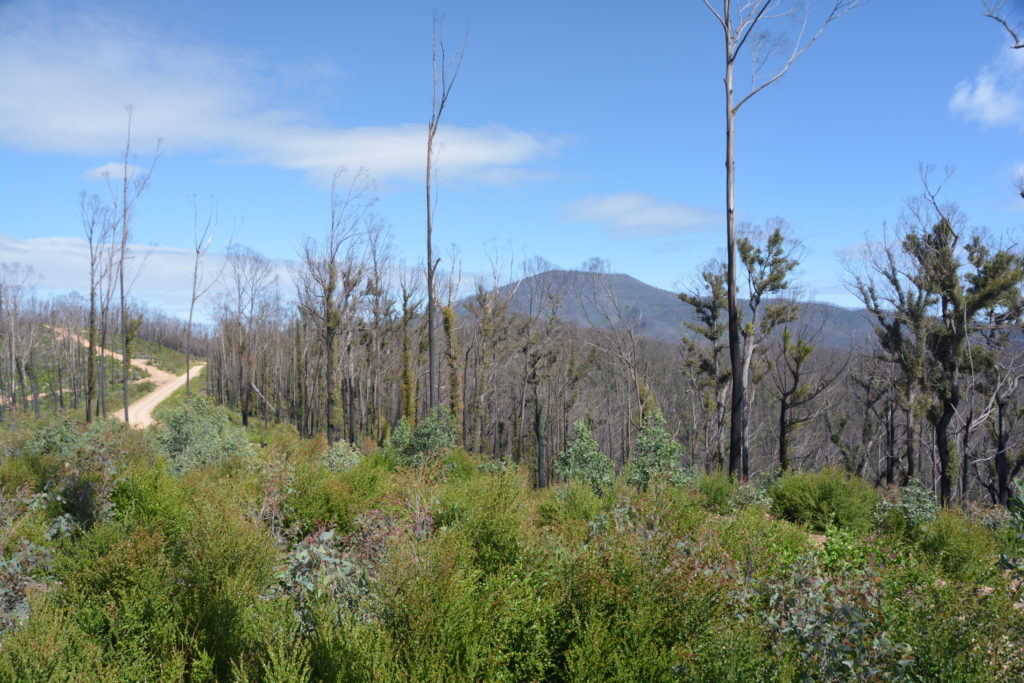
Such is life on the road. We drained the grey water tank and did what we could without opening the camper, then headed first to Eden to check out the ‘famous’ whale museum and then to Bega for supplies. We headed down to Bournda National Park on the coast for another night amongst the trees with loud bell birds in the trees above us and crashing surf in the background.
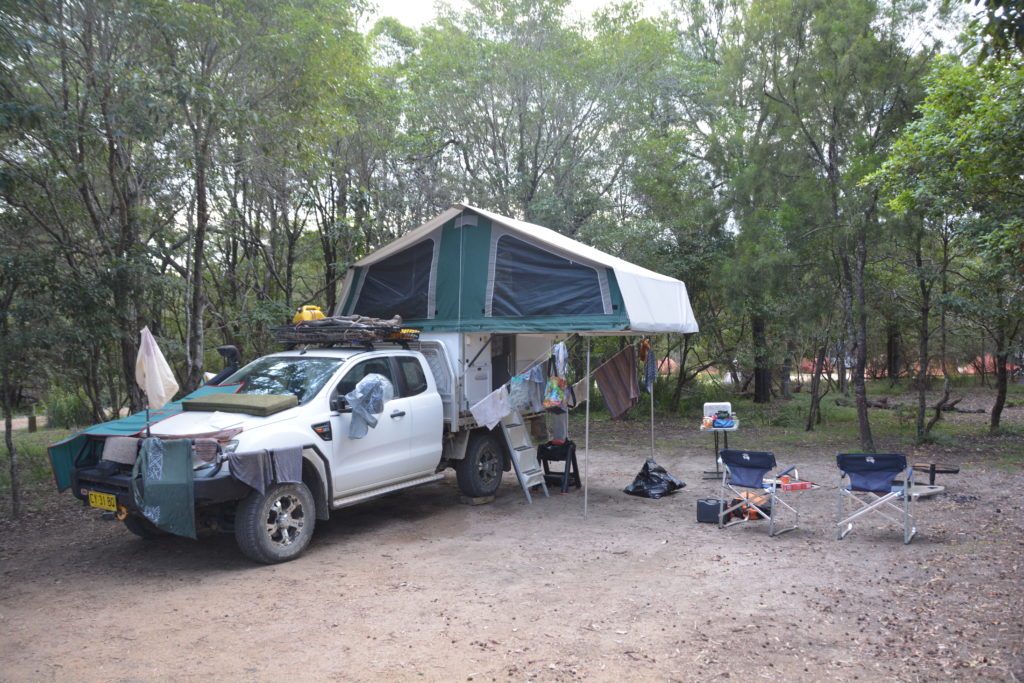
Bournda is another park preserving beautiful coastal heath, forest, sand dunes and another stunning beach. We walked out on the deep sandy beach and out to another of these tied islands, connected to the mainland via a sand bar (called a tombolo) that appears at low tide. Great fun to venture out on the sand bar but the tide was too high to actually jump over to the rocky islet.
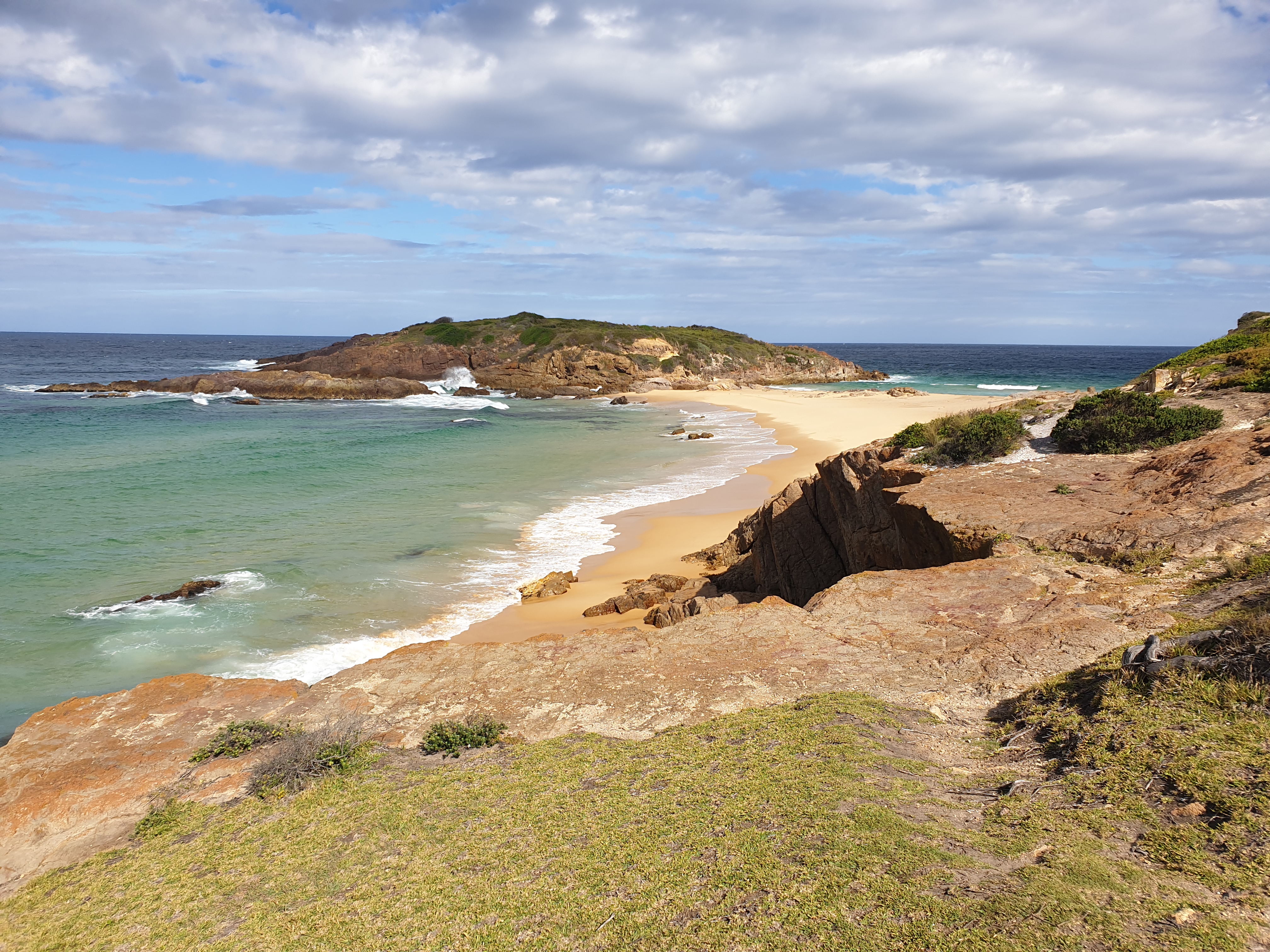
Our plan was to slowly move north up the coast but the weather forecast was very average and we also had options to move inland. It doesn’t matter, we set our course day by day and after spending some time drying out all our gear in the camper, not an insignificant project, we headed out for another adventurous day.
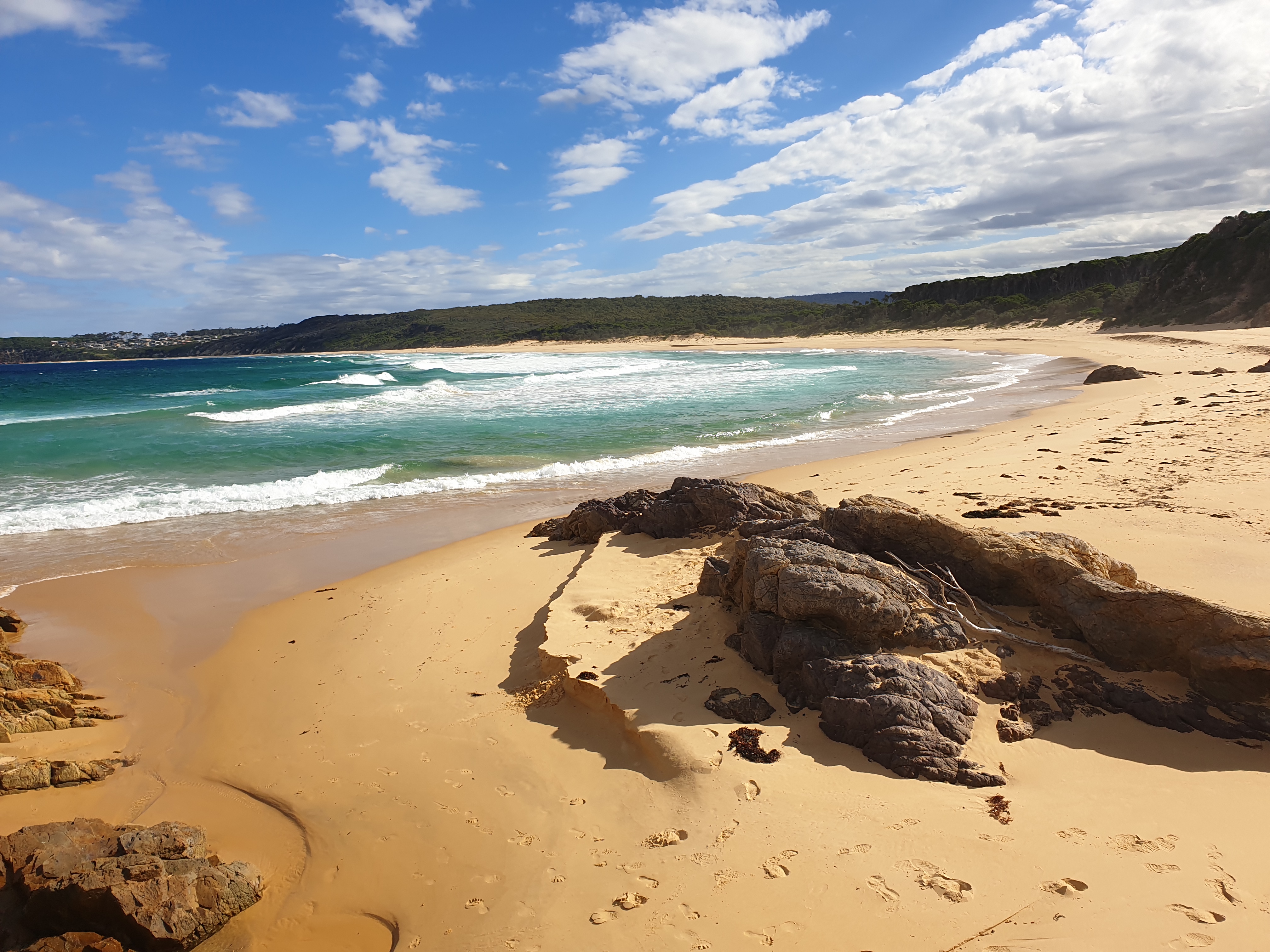
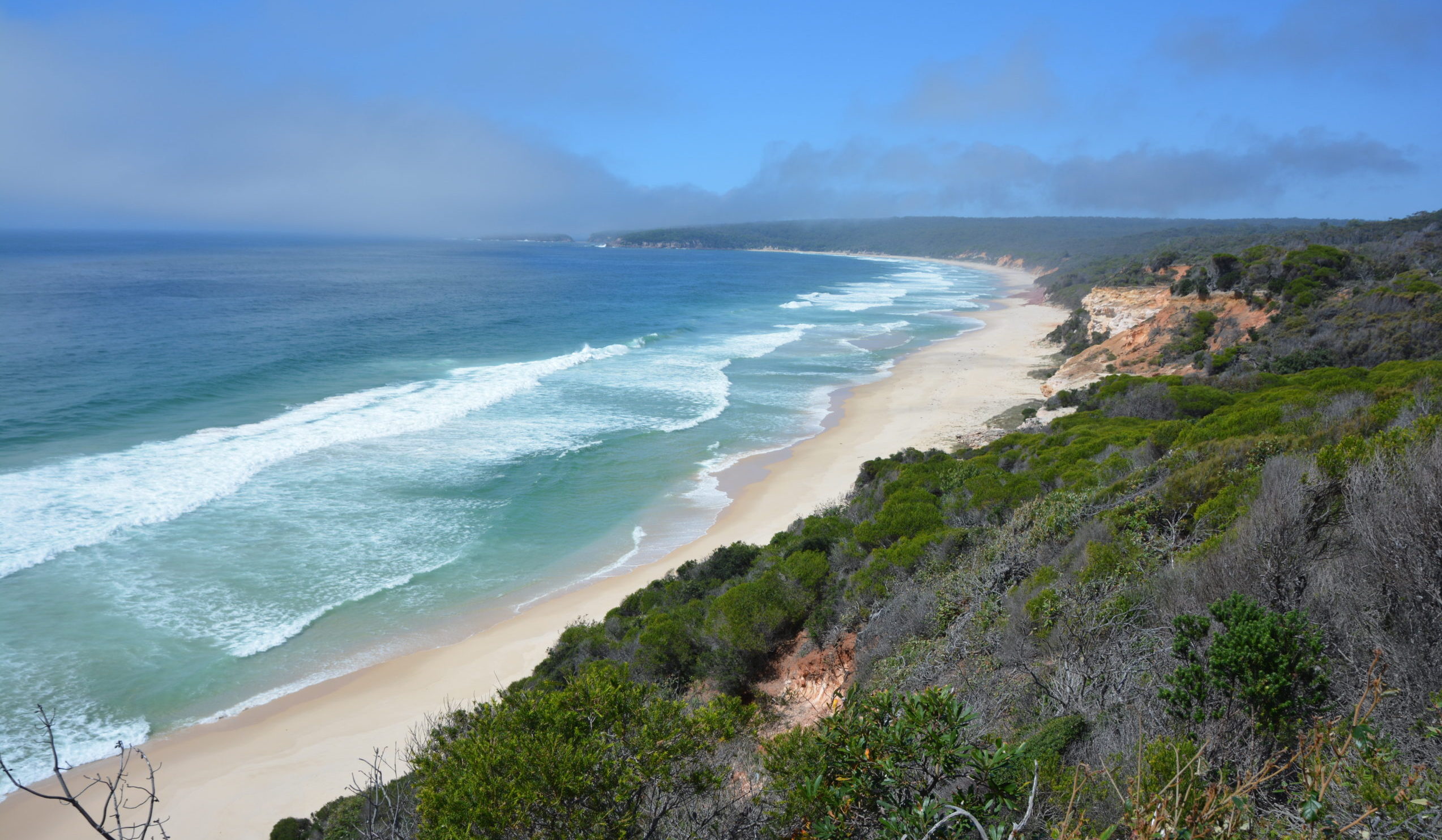
Comments
Back to the beaches — No Comments
HTML tags allowed in your comment: <a href="" title=""> <abbr title=""> <acronym title=""> <b> <blockquote cite=""> <cite> <code> <del datetime=""> <em> <i> <q cite=""> <s> <strike> <strong>